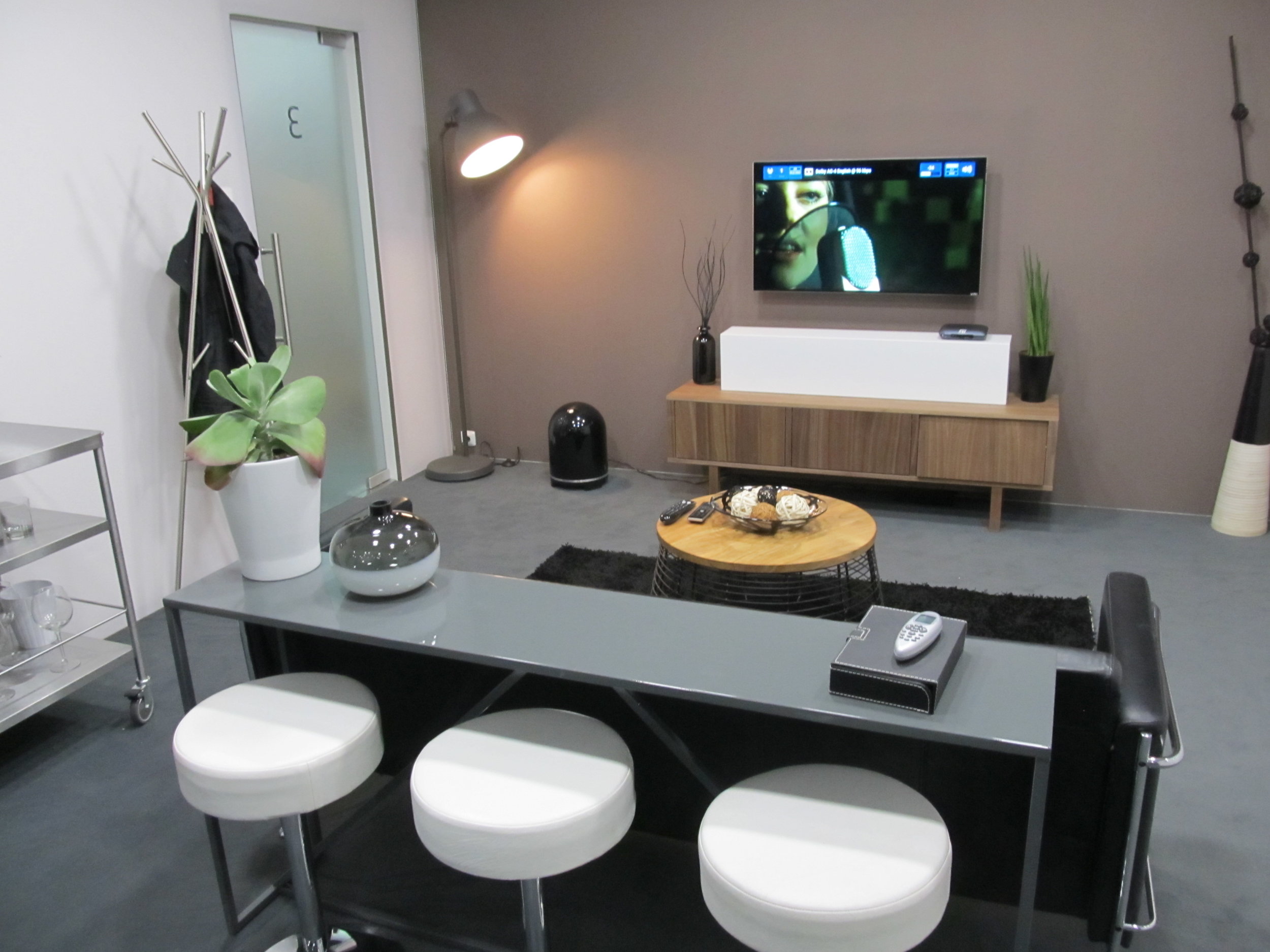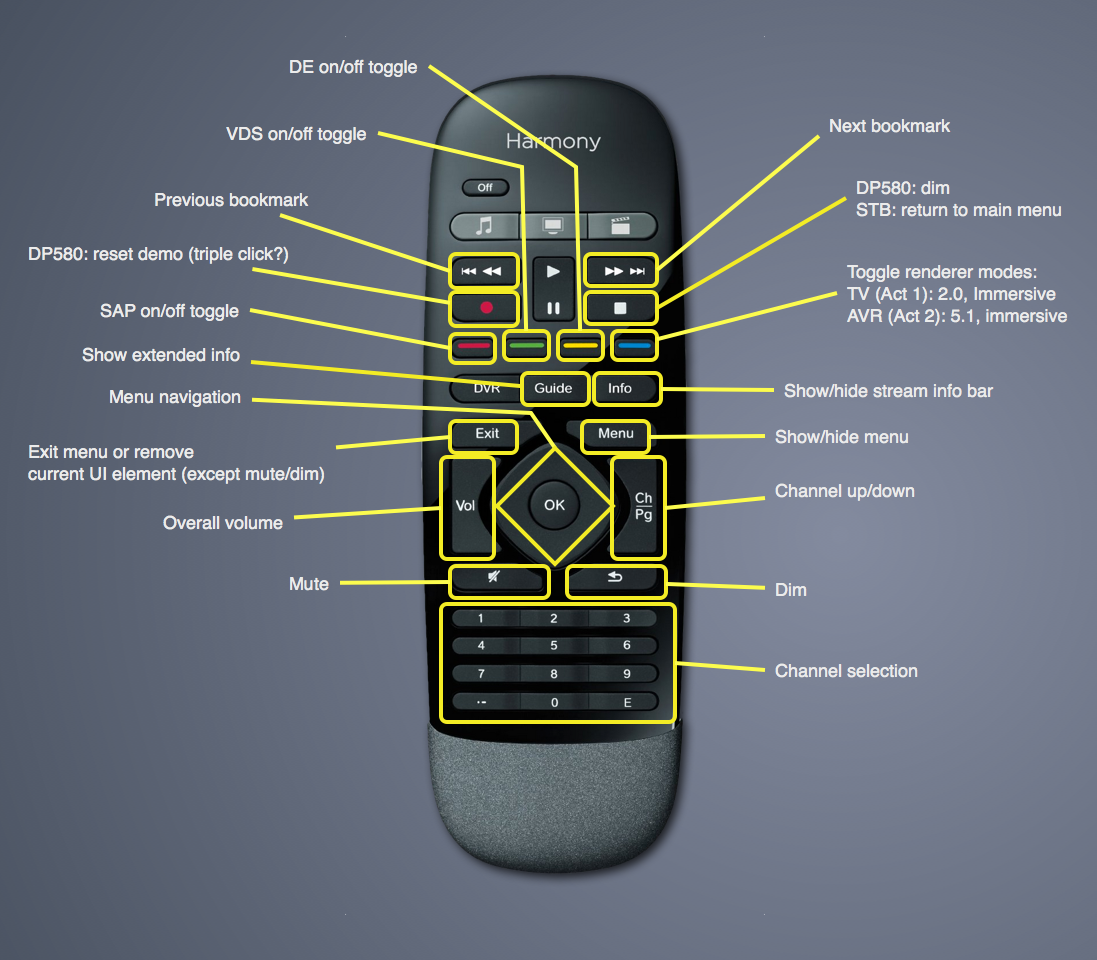The Brief
When the Advanced Television Standards Committee (ATSC) was looking to define the standards for next-generation TV services in North America, Dolby wanted to show that its latest advanced audio system—AC-4—would deliver the best experience for viewers and broadcasters alike. To do so, Dolby would have to give a series of compelling demos to technologists and executives from across the industry to prove they had what it takes to earn their place in this $20bn market.
“The demos were the best I have seen us do at Dolby. The attention to detail in the content, the user interface, the overall experience, was amazing.”
My Role
I was responsible for the complete UX design of two technology demos: a "ten foot" TV user interface and a corresponding mobile app. Working closely with product owners, presenters and development teams I lead the design from initial research through to asset production.
The TV UI we designed. Executives could run the whole demo with a TV and remote control.
The Work
My initial research with stakeholders revealed some key challenges to solve:
COMPLEXITY. The demos were technically complex, with many interconnected components and systems. We wanted to ensure that the experience for the attendees was simple, elegant, and compelling whilst also satisfying their technical curiosity. Further, we had a requirement that the demo could be run by a single presenter using only a TV remote control.
CONSTRAINTS. There were many stakeholders, often with conflicting requirements. Time was short—we had only a few months to pull everything together.
COORDINATION. The demo involved teams from across the US, Europe and Asia, requiring us to ensure clarity in our collaboration.
“We needed to tell a story about next-generation audio, and the UIs were critical to doing that well.”
Research
Stakeholders interviews
Micro-personas
RFP review
High-level requirements
“Every ‘how hard would it be?’ ask that I made of Stew and the team was met.”
Design and Test
Information architecture
Sketching
Lo-fi mockups (Balsamiq)
Lo-fi prototypes (Balsamiq)
Hi-fi mockups (Sketch)
“The attention to detail, experience, readiness, content...were all unmatched. You really made a difference.”
Build
Hi-fi prototypes (Keynote)
Visual design (Sketch)
Asset production (Sketch)
Requirements (Confluence)
Code (Java/Android)
“The user interface developed was intuitive, descriptive, and visually appealing.”
Result
On 23 February 2017, after several successful demos to industry executives and decision makers, Dolby AC-4 was accepted into the ATSC 3.0 standard. This ensured that Dolby would remain a key technology partner not just for the domestic TV market, but for many regions around the world that model their own standards after the ATSC's.
Further, the TV UI proved so useful in presenting critical information that it formed the basis of a new product line of professional signal monitoring equipment. The tablet UI would go on to form the basis of other technology demos.







